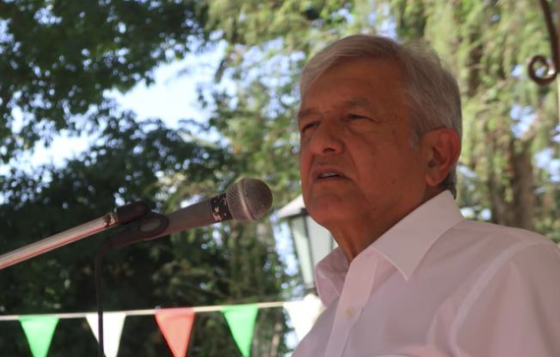
Will Colombia’s New President Deliver on His Promises?
Iván Duque, a conservative former senator, on Sunday won Colombia’s presidential runoff election. What does it mean for the country?
A Daily Publication of The Dialogue
The past year has brought economic recovery for much of Latin America and the Caribbean due to the rollout of vaccines, favorable external factors and the reopening of some international borders. While the International Monetary Fund estimates that the regional real GDP will grow by 6.3 percent by the end of the year, the lender also notes that it will take several years for the state of the region’s economies to reach pre-pandemic levels. Which countries struggled to recover in 2021, and what will it take for them to return to pre-pandemic levels of growth? What is the outlook for Latin America and the Caribbean’s main economic indicators for 2022? What events and policies have been the most important for the economic recovery of the region, and how significant have increasing remittances been for the improvement of low- and middle-income countries?
Alicia Bárcena, executive secretary of the United Nations Economic Commission for Latin America and the Caribbean: “For 2021, we expect that Latin American and Caribbean (LAC) countries will grow around 6 percent due to a statistical rebound, continued favorable external conditions and the ongoing reopening of economies. For 2022, we expect a slowdown in the growth rate of approximately 2 percent. This reflects weaker external conditions for LAC, given that lower global growth is expected for 2022 with less dynamic external demand and global trade, and with commodity prices expected to remain stable or even somewhat lower than 2021. Likewise, the probable increase in interest rates due to rising inflationary pressures in developed countries can increase financial volatility and have a negative impact on the cost of borrowing for the countries of Latin America and the Caribbean. These countries are also experiencing inflationary pressures, which constrain their capacity for expansionary monetary policy. The increase in public debt and fiscal deficits has reduced fiscal space, and many countries have been cutting fiscal spending this year. Macroeconomic adjustment will jeopardize future growth. ECLAC forecasts that by the end of 2022–almost three years after the pandemic began–more than half the countries in the region will not have recovered the pre-pandemic levels of GDP. And what is worse is that beyond 2022, there is no reason to anticipate that the low growth dynamics that the region had been exhibiting before the pandemic (with 0.3 percent growth on average in the six-year period up to 2019) will improve. The pandemic has inflicted lasting damage on the economies of much of Latin America and the Caribbean, exacerbating the structural problems that already characterized the region prior to the crisis.”
Alberto M. Ramos, managing director and head of Latin American economics at Goldman Sachs: “Looking forward, the pandemic is expected to be less critical in shaping the macro outlook than during 2020-2021, given the significant improvement of the Covid-19 backdrop and the balance of risks around it. Rather than the pandemic, the macro outlook for Latin America and the Caribbean (LAC) will be shaped by some of its longstanding endemic structural challenges: low investment/savings and total factor productivity growth amid high levels of labor and business informality and persistently high macro and policy/political uncertainty. The social picture worsened in 2020-2021, and low growth and high inflation are staging a comeback. By the third quarter of 2021, most LAC economies have seen levels of activity return to roughly pre-pandemic levels, in some cases already clearly above them (Chile and Colombia), and others still below them (Mexico). For the LA7 economies (Argentina, Brazil, Chile, Colombia, Ecuador, Mexico and Peru) real GDP growth is expected to downshift to a modest 2 percent in 2022 given diminishing returns from reopening, high inflation, policy tightening, softer external impulse to growth and heightened effects of political uncertainty. Growth in 2022 should benefit from pent-up private spending and business inventory rebuilding. Inflation arrived during the second half of 2021 and will likely remain on the scene until 2023. It is projected to peak in the fourth quarter of 2021 and moderate gradually thereafter, remaining above target throughout all of 2022. High inflation, upward drifting inflation expectations and heightened political and policy risk are expected to lead central banks to embrace neutral-to-restrictive policy stances. LAC continues to be challenged to build the foundations for robust, sustainable and socially inclusive growth. We are not optimistic this will be achieved in 2022-23, particularly against a backdrop of high political and policy uncertainty given a heavy calendar of political events: polarizing presidential elections in Chile, Colombia and Brazil, and the uncertain process of a new constitution in Chile.”
Claudio M. Loser, president and CEO of Centennial Group Latin America and former head of the Western Hemisphere department at the International Monetary Fund: “After a decline of 7 percent in GDP in 2020, the short-term prospects for the region are for a solid recovery–as noted, a growth of 6.3 percent this year. This is the second fastest growth rate among emerging economies, but then again, there was no other region with such a sharp contraction in 2020 after virtual stagnation in 2019. Moreover, only in 2022–with an expected growth rate of 3 percent–will Latin America reach its pre-pandemic output levels, behind most other regions. Though difficult to estimate, the 2020 contraction could have been much larger without the policy support, although considerable efforts are still necessary to recover from the pandemic and reduce poverty and inequality. Moreover, it may take until 2023-2024 to reach the levels expected for this year prior to 2020. Risks remain because of different rates of health recovery, the breakdown in the global value chain, tightening in labor markets and a higher rate of inflation, even as commodity prices have increased. Still, the pace of improvement is stronger than previously projected, thanks to improved prospects in Mexico, Brazil and to a lesser extent Argentina. Still, the share of the region’s GDP in the world total has declined from 7.7 percent in 2010 to somewhat above 5 percent now, with no per capita increase in income. In the end, the region will see favorable winds from abroad, including through remittances, but most of the recovery and future growth will depend on the pursuit of appropriate domestic policies.”
Alfredo Coutiño, director of Latin America at Moody’s Analytics: “Latin America ended 2021 with the traditional post-recession rebound, with growth amplified by the base effect generated by the low comparison base in 2020. Growth is ending the year at around 6.5 percent, after a 7 percent contraction in 2020. The recovery was naturally heterogeneous across countries, where growth was faster and higher in nations that used economic policy to reduce the impacts of the pandemic by mitigating the effects on people and businesses. A small group of countries has already reached and outpaced the pre-pandemic levels of production, including Chile, Colombia and Peru. Chile is an impressive case, where the economy is already performing above its potential capacity, thus running the risk of overheating. Meanwhile, Brazil and Argentina are close to pre-pandemic levels. Another group, including Mexico, Uruguay, most of Central America and the rest of South America, is still performing below pre-pandemic levels and will take a few more quarters to recover the output lost. This requires restoring the accumulation of capital through accelerating investment. Unfortunately, most of the countries were already caught off guard by the early arrival of the monetary normalization and are trapped in an inflation inertia. Prospects for 2022 are on the downside given the galloping inflation, imminent restrictive global conditions and increasing financial turbulence. The region faces a significant reduction of its countercyclical policy power (fiscal and monetary), leaving the economies subject to the ups and downs of the global economy. Fortunately, the United States is expected to continue recovering, given the significant investment in infrastructure projects to be implemented in the coming years. Thanks to that, remittances will continue to support low-income Latin American families with higher propensity to consume. The region is mostly at the mercy of the global recovery in 2022.”
 The Latin America Advisor features Q&A from leaders in politics, economics, and finance every business day. It is available to members of the Dialogue’s Corporate Program and others by subscription.
The Latin America Advisor features Q&A from leaders in politics, economics, and finance every business day. It is available to members of the Dialogue’s Corporate Program and others by subscription.
Iván Duque, a conservative former senator, on Sunday won Colombia’s presidential runoff election. What does it mean for the country?
Mexicans go to the polls on Sunday, July 1, for the country’s presidential, legislative and local elections. What can we expect?
Leftist Andrés Manuel López Obrador swept to victory Sunday in Mexico. What changes are in store?
 Analysts are expecting Latin America’s regional economy to grow about 6 percent this year. // File Photo: QuoteInspector.com.
Analysts are expecting Latin America’s regional economy to grow about 6 percent this year. // File Photo: QuoteInspector.com.

